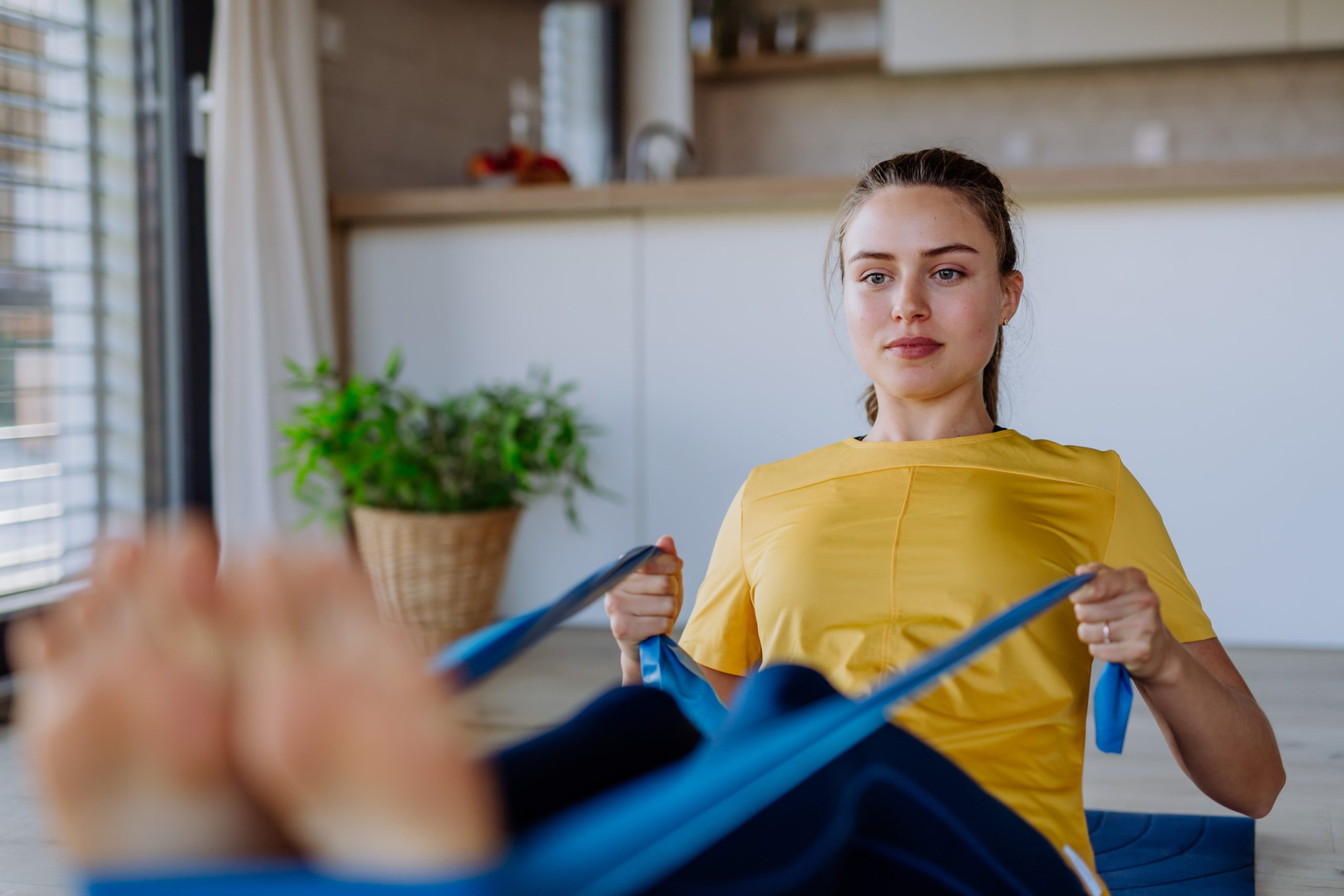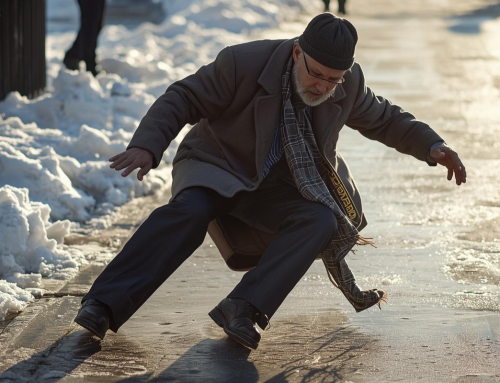Recovery after a fracture isn’t passive. It demands daily effort, even when your mobility is limited.
Whether you’re early in rehab or transitioning out of a cast or boot, the right tools can ease stiffness, support mobility, and promote healthy bone healing.
This article highlights simple, effective equipment you can use at home—from resistance bands and foot rollers to compression supports and bone stimulators that help drive bone regeneration. These tools are designed to support your recovery without adding complexity or overwhelm.

TL;DR
The majority of fracture recovery happens at home, where the right tools can make a big impact. This article highlights practical rehab options to help reduce stiffness, restore mobility, and support bone regeneration. From resistance bands and pedal exercisers to LIPUS bone stimulators like Melmak, these tools promote healing without adding complexity to your routine.
Why At-Home Rehab Matters During Fracture Recovery
Most fracture care includes some form of medical intervention, whether it’s surgery, casting, physiotherapy, or imaging. But recovery doesn’t stop there.
The reality is that most of your healing efforts happen at home. Without regular movement and support, it’s easy to lose strength, develop stiffness, or slow your body’s healing response.
The right at-home tools can help you:
✅ Maintain joint and muscle function without overexertion.
✅ Reduce swelling and discomfort through elevation and support.
✅ Promote circulation for faster recovery.
✅ Encourage bone regeneration and faster healing.
Used consistently, at-home rehabilitation tools bridge the gap between professional care and everyday healing so your progress continues between medical appointments.
Mobility and Movement Tools for Fracture Recovery
Movement plays an essential role in fracture recovery, but it has to be the right kind of movement. Once cleared by your doctor or physiotherapist, gentle exercise can help restore strength and flexibility.
1. Resistance Bands
A go-to tool for rebuilding strength and improving range of motion. Use them to:
-
- Activate muscles gently after long periods of rest
- Reintroduce movement to stiff joints
- Progress gradually by adjusting resistance levels
2. Foot Rollers or Massage Balls
Ideal for foot, ankle, or lower leg fractures. They can help:
-
- Stimulate circulation to promote healing
- Ease tension after prolonged elevation
- Help reduce stiffness and pain in surrounding muscles
Foam rollers for larger areas (like calves or thighs) can also be useful when appropriate.
3. Pedal Exercisers or Mini Bikes
Compact and quiet, these under-desk-style pedal machines provide gentle cardio with almost no impact. They’re great for:
-
- Encouraging circulation in the legs and feet
- Improving mobility after lower-limb fractures
- Staying active during early recovery without strain on healing bones
Use for short, frequent sessions, especially if you've been cleared for partial weight-bearing or seated activity.
Support and Stability Tools for Fracture Recovery
Staying comfortable during recovery helps you move more comfortably, rest more easily, and avoid setbacks. Here’s what to consider adding to your at-home setup:
1. Braces, Splints, and Compression Wraps
These tools are sometimes prescribed post-injury or post-surgery. When used correctly, they:
-
- Stabilize healing bones and reduce unnecessary movement
- Apply gentle compression to manage swelling
- Protect vulnerable areas during daily activities
Note: Always follow medical advice before using braces or wraps at home.
2. Cushions, Wedge Pillows, and Elevation Supports
Elevation helps reduce fluid buildup, which can lead to swelling, discomfort, and prolonged recovery.
-
- Use firm pillows, a leg wedge, or adjustable supports to raise the injured limb
- Aim to keep the area elevated above heart level, especially at night or during rest periods
- Elevation is especially helpful for lower limb fractures or post-surgical swelling
3. Cold Therapy Gel Packs or Wraps
Cold therapy is a simple, effective way to manage inflammation in the early stages of recovery.
-
- Helps reduce pain and swelling after periods of activity
- Can be especially helpful after physical therapy or movement exercises
- Choose reusable gel packs with soft fabric covers to avoid direct skin contact
Alternate cold therapy with periods of rest, and always follow your care provider’s advice on frequency and duration.
LIPUS Bone Stimulators for Fracture Recovery
When a bone breaks, your body works hard to regenerate tissue and restore strength. Bone stimulators support this process by helping activate the cells responsible for bone formation.
One widely regarded technology in fracture healing is LIPUS, or Low-Intensity Pulsed Ultrasound. It delivers gentle ultrasound waves to the fracture site, helping activate the cells involved in bone regeneration and healing.
The Melmak LIPUS device is:
✅ Portable and quiet, designed for home use.
✅ Suitable for early-stage healing, slow-healing fractures, or non-unions.
✅ Backed by clinical research and used just 20 minutes a day.
By incorporating LIPUS into your daily routine, you give your body consistent support to rebuild and regenerate bone without adding stress to the healing process.
Waiting for healing isn’t your only option.
LIPUS therapy supports fracture healing at home—non-invasively, and in just 20 minutes a day.
Get your Melmak LIPUS device now →
Tips for Creating an Effective At-Home Recovery Routine
A strong fracture recovery routine is about steady, consistent effort vs. intensity. Here’s how to make the most of your tools:
→ Start small and build gradually.
Ease into movement and routines with gentle exercises. Let your body guide what’s tolerable and increase slowly from there.
→ Prioritize consistency over intensity.
Doing a little every day matters more than occasional long sessions. Bone healing thrives on repetition and steady support.
→ Track progress and patterns.
Write down changes in pain, mobility, swelling, or sleep. Even subtle improvements show that healing is happening.
→ Stay in touch with your care team.
Let your physiotherapist or physician know what you’re using at home. They can help adapt your plan and flag any concerns.
→ Be patient with the process.
There’s no perfect healing timeline. These tools don’t promise overnight results. They’re here to make healing more effective and manageable day by day.
Support Your Fracture Recovery from Home
The right home setup can make a meaningful difference in how your body heals. At-home rehab tools can help restore movement, reduce pain, and promote stronger healing over time.
And if you’re looking to support bone healing more directly, LIPUS therapy offers a clinically backed way to promote bone regeneration as part of your daily routine. It’s quiet, portable, and fits into your daily routine.
👉 Ready to support your healing from home? Explore how Melmak LIPUS fits into your recovery toolkit.





